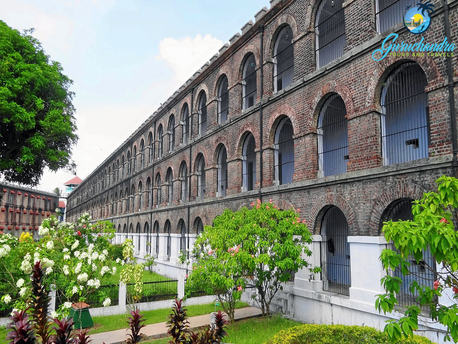
The Cellular Jail, also known as Kala Pani (Black Waters), is a historic prison located in Port Blair, the capital city of the Andaman and Nicobar Islands in India. The construction of the Cellular Jail began in 1896 and was completed in 1906. It was designed by a British architect named Major General Sir Edmund Du Cane. The jail was built by the British colonial government to imprison and isolate political prisoners during the Indian independence movement. It was used to incarcerate freedom fighters who were fighting against British rule.

The Cellular Jail is a massive three-story structure with seven wings radiating from a central watchtower. Each wing has multiple individual cells, and the design was such that prisoners could not communicate with each other. The jail was designed to impose solitary confinement on the prisoners, and the cells were very small, measuring about 4.5 meters by 2.7 meters. The conditions were harsh, and prisoners were subjected to physical and psychological torture.

Today, the Cellular Jail has been converted into a national memorial and museum. The museum showcases the history of the jail and the stories of the freedom fighters who were imprisoned there. The Cellular Jail also hosts a popular light and sound show in the evenings, which depicts the history of the Andaman Islands and the struggles of the freedom fighters. It is a major tourist attraction. The Cellular Jail was declared a national monument in 1979 and was subsequently recognized as a UNESCO World Heritage Site in 2002.